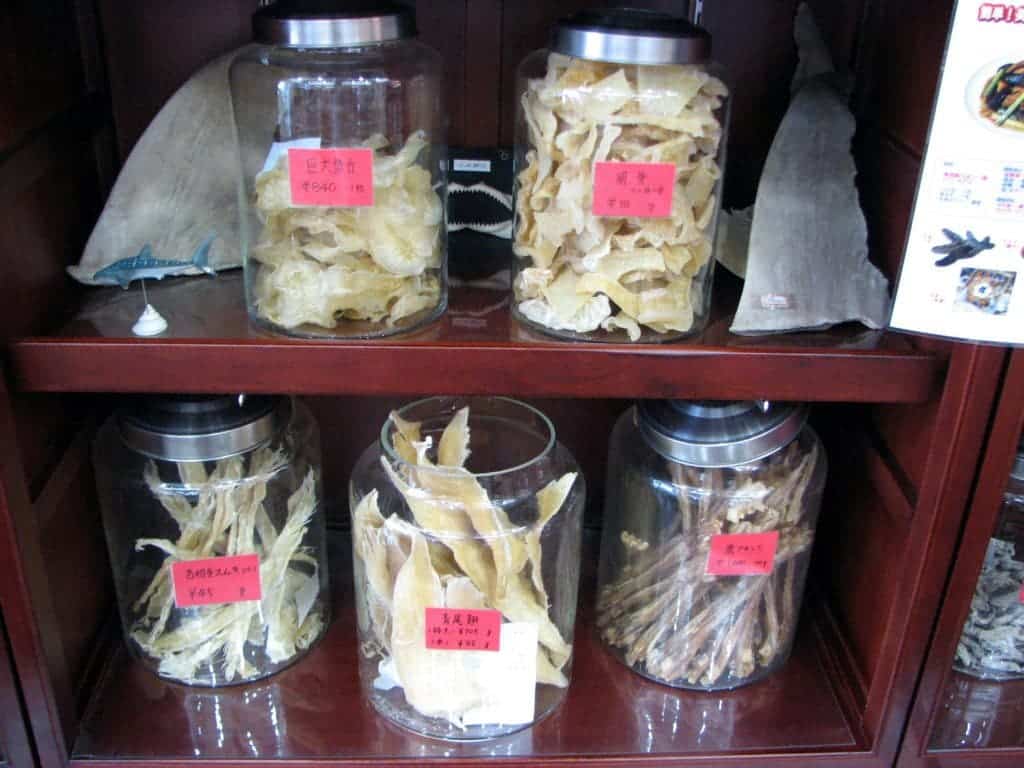DNA sequencing of over 100 shark fins and manta ray gills in Vancouver has revealed that over half come from threatened species who are banned for trade under international law.

As far as traditional Chinese delicacies go, shark fins are more on the expensive side. They’re used to make soups that can sell for over US$100 per bowl and are generally served during special occasions. Manta ray gill rakers, tiny filaments which these species use to filter nutrients out of water are used in traditional Chinese medicine, advertised as effective against all sorts of conditions from smallpox to cancer according to the conservation group Manta Ray of Hope.
The problem with them is two-fold. First, about a quarter of shark and ray species around the world are threatened due to overfishing, according to the International Union for the Conservation of Nature (IUCN). Secondly, they’re sourced very inhumanely — shark fins, for example, are cut off from live animals which are then thrown back into the ocean where they die a slow, agonizing death. So the commercial use of these commodities sourced from several species of both shark and ray are banned for international trade in an effort to give the animals respite from commercial fishing, and allow them an opportunity to recover.
But that doesn’t mean people don’t still buy and sell them, according to a research team led by Dirk Steinke from the University of Guelph. They’ve tested over 100 samples of the items available for purchase in Vancouver, Canada, and report that over 71% belong to species that are considered endangered.
Fin-ding soup

Image credits Chris 73 / Wikimedia.
According to Steinke, Canada is the largest importer of shark fins outside of Asia. The Senate of Canada’s website reports that in 2015, the country imported some 114,540 kilograms (252,517 pounds) of fins, and the CBC cites Statistics Canada as saying this increased to 140,750 kilograms (310,300 pounds) of shark fins worth $3.08 million (of the total $11,3 million estimated global trade) in 2016.
Steinke’s research was in part prompted by the Vancouver Animal Defence League, which was concerned that fins from protected species were being sold locally. Because these fins are very expensive, the team used 71 dried fin samples collected in 2011 and 2012 by volunteers and University of Guelph researchers, and 54 ray gill plates obtained by scientists working with the Save Our Seas Shark Research Centre at the Nova Southeastern University from Hong Kong and mainland China.
“It took them awhile to get the money together because they’re not cheap,” Steinke said.
The samples were analyzed using DNA barcoding, a technique developed at the University of Guelph which allows for species to be pinpointed using relatively short bits of DNA. The drying process actually helped speed this along, Steinke said, as it helps preserve DNA in a usable form.
Overall, the team traced the samples back to 20 species of sharks and some 5 species of rays. Roughly 56% of them are on the IUCN Red List as endangered or vulnerable, and some 24% are close to threatened status. Seven of the shark species and all five ray species are also banned from international trade under the Convention on International Trade in Endangered Species treaty. It must be pointed out that the ban for most of these species went into effect between 2014 and 2017, which is after the samples were collected. However, the team did trace some samples back to species which did have protected status and was banned from trade at the time the samples were collected, such as the whale shark.
Banned but not gone

Image credits harmon / Wikimedia.
That last tidbit, coupled with the fact that there are “confirmed occurrence of these species’ body parts in recent trade suggests ongoing market demands,” the researchers wrote. Although almost three-quarters of shark and ray species are not considered threatened, are not banned from trade in Canada, and are not at risk of extinction, it’s “very frustrating, although not unexpected” that we see such a large percentage of banned species still up for trade — rarer types of fins will, after all, demand a higher market price, offering an incentive in their continued trade.
Compounding the problem is that authorities simply lack the means to meaningfully impose the ban. It’s virtually impossible to tell what species a dried fin belongs to simply by looking at it. Retailers can reliably expect to get off without being caught and fined, and along with the high price fetched by the fins selling illegal species “might still pay off,” Steinke says. DNA testing can reliably trace the source species, and is quite cheap at US$10 a pop — but it can take up to several weeks for a result.
Steinke hopes that raising awareness and lowering demand will wither the market and at least help some sharks make it out alive — and eventually stop it altogether. He also hopes the results (and ideally, public support for such measures) will goad politicians into banning shark fin sales on a larger scale. Similar bans are already in effect at a local level in over a dozen municipalities in Canada, but bills for a federal ban have already failed to pass in 2013 and 2016.
These animals have been around for longer than trees, and we’re killing them over what’s widely agreed to be a pretty tasteless soup. Traditions do have a very important role to play in human life, granted. But there’s a point where we have to take the reigns, a point beyond which getting bogged down in the past will make tomorrow less — and in this case, we’re literally eating the viability of tomorrow’s oceans. Although, that seems to be a very human-like take on a lot of very serious issues.
Third time’s the charm as far as bans go, hopefully.
The paper “DNA analysis of traded shark fins and mobulid gill plates reveals a high proportion of species of conservation concern” has been published in the journal Scientific Reports.


